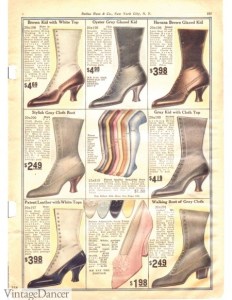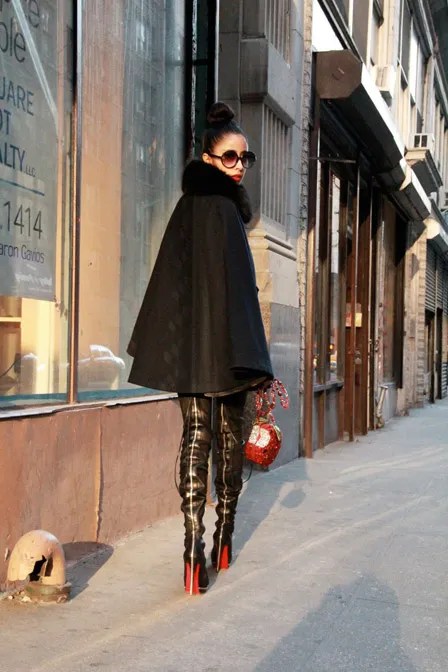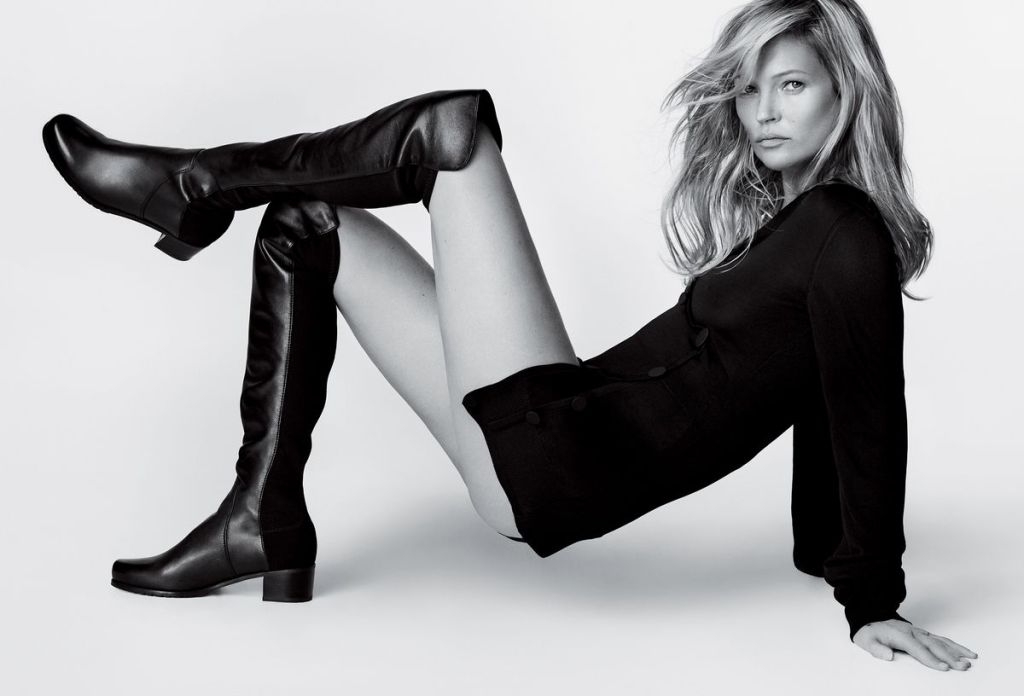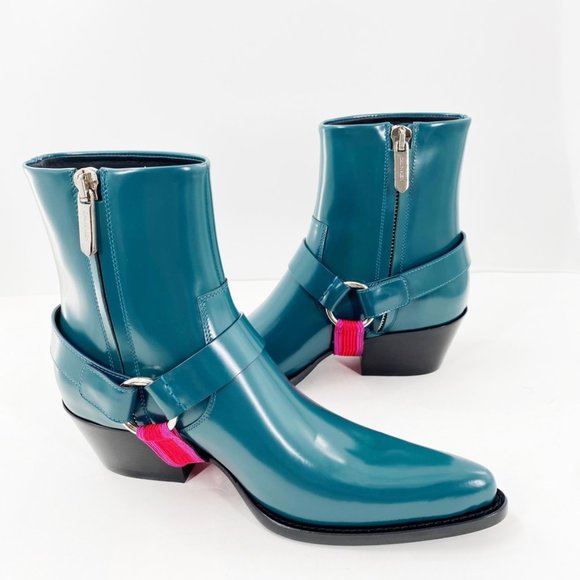Historically, boots were primarily seen as practical footwear worn for protection from the elements and rough terrain. They were commonly worn by soldiers, workers, and outdoorsmen, but were not seen as fashionable.
In medieval Europe, boots became a symbol of wealth and status, with high-quality leather boots becoming increasingly popular among the nobility. Women also began wearing boots during this period, with many styles featuring intricate embroidery and decorations. However, boots were still primarily seen as practical footwear, worn for protection from the elements and rough terrain.
During the Industrial Revolution, advances in technology allowed for the mass production of boots, making them more affordable and accessible to the general public. This period also saw the rise of specialized bootmakers, who developed new techniques and designs to meet the demands of their customers.

Boots And Wartime Restrictions

Until the late 1780’s women only wore boots for horse riding, at some point they began wearing boots for walking as well and so it was that the fashion for boots gained popularity. Boots became the chosen footwear for bicycling and walking until skirt hems rose, and the shafts of boots grew taller. Unfortunately, wartime saw demand for leather required for military use and as a result, in 1917, boot height was restricted to eight inches in England.
In the 20th century, boots became an iconic fashion statement, with women’s boots taking on a wide range of styles, from practical and sturdy work boots to sleek and stylish high-heeled boots. The popularity of boots for women continued to grow, with many designers experimenting with new materials, textures, and colors to create unique and eye-catching designs.

Boot lovers can now choose boots for functional purposes, such as work boots, motorcycle boots, and climbing boots, or simply choose to wear boots as a fashion or sexual statement.
In the history of fashion, boots took a long time to catch on. There are several reasons for this:
- Practicality: Historically, boots were primarily seen as practical footwear worn for protection from the elements and rough terrain. They were commonly worn by soldiers, workers, and outdoorsmen, but were not seen as fashionable.
- Material Availability: Early boots were typically made of leather, which was a scarce and expensive material. This limited their availability and made them primarily accessible to the wealthy or to those who needed them for practical reasons.
- Cultural Norms: In many cultures, boots were associated with masculinity and were not considered appropriate for women to wear. It was only in the 19th century that women’s fashion began to embrace more practical footwear options like boots.
- Design limitations: In the past, boot design was limited by the materials and manufacturing techniques available. This made it difficult to create boots that were both functional and fashionable.
Despite these challenges, boots eventually caught on in the world of fashion. Today, boots continue to be a popular and versatile footwear option, with a wide range of styles and designs available to suit different tastes and needs. From rugged work boots to sleek high-heeled boots, boots have come a long way from their practical origins to become an essential part of fashion footwear.
It is difficult to pinpoint the first boot designer that rocked the world of fashion, as there have been many influential designers throughout history who have contributed to the evolution of boots as a fashionable footwear option. Here are a few designers who are widely recognized for their contributions to the world of fashion boots:






- Roger Vivier: A French shoe designer who is credited with popularizing the stiletto heel in the 1950s. Vivier also designed a range of high-heeled boots that became popular among celebrities and fashion icons.
- Nancy Sinatra and Beth Levine: In the 1960s, Nancy Sinatra’s hit song “These Boots Are Made for Walkin'” helped popularize knee-high boots, which were designed by American footwear designer Beth Levine.
- Manolo Blahnik: A Spanish fashion designer who is best known for his high-end women’s shoes, including a range of stylish and luxurious boots.
- Christian Louboutin: A French fashion designer who is famous for his red-soled shoes, including a range of fashionable boots in a variety of styles and colors.
- Stuart Weitzman: An American shoe designer who has created a wide range of stylish and innovative boots, including the iconic 5050 over-the-knee boot.
These designers, among others, have contributed to the evolution of boots as a fashionable footwear option, experimenting with new materials, styles, and designs to create unique and eye-catching boots that have become popular among fashion enthusiasts around the world.
How did boots designed for practical purposes turn into a fashion item? A perfect example would be Cowboy boots. These were originally designed for practical purposes, such as horseback riding and ranch work. However, over time, they became a global fashion trend due to their unique design, cultural significance, and versatility. The pointed toe, high heel, and tall shaft of the boot were specifically designed to help the rider stay in the stirrups and protect their feet and legs from brush, rocks, and other hazards. As these boots became more popular among cowboys and ranchers, they gained a reputation for being tough, durable, and functional.


In the mid-20th century, cowboy boots became popularized through Hollywood Westerns and the rise of cowboy actors like Roy Rogers and John Wayne. These movies and icons helped to popularize cowboy boots as a symbol of rugged masculinity and American culture. Country music also played a role in the popularity of cowboy boots, with musicians like Hank Williams and Johnny Cash often wearing Western-style clothing and footwear. As country music became more popular around the world, so too did cowboy boots.

In the 1980s and 90s, cowboy boots experienced a resurgence in popularity thanks to the rise of Western-inspired fashion trends. Designers like Ralph Lauren and Calvin Klein incorporated cowboy boots into their collections, and celebrities like Madonna and Lady Gaga helped to turn these into fashionable accessories.
Today, cowboy boots remain a fashionable accessory, worn by both men and women in a variety of styles and colors. This transformation from a practical piece of footwear to a worldwide fashion item is a testament to the enduring appeal of cowboy boots’ timeless design and cultural significance.
FETISH BOOTS
The association of certain boot styles with fetish fashion can be traced back to several factors, including cultural and historical influences, as well as the materials and design elements used in boot construction.
One of the main reasons certain boot styles have been appropriated by fetish fashion is their association with power, sexuality, and control. Boots are a form of footwear that is often associated with strength and protection, and certain styles like thigh-high boots, platform boots, and stiletto boots are designed to accentuate the leg and create a sense of height and dominance.



The materials used in boot construction also play a role in their association with fetish fashion. Leather, latex, and other shiny or patent materials are commonly used in fetish fashion due to their association with sensuality and eroticism.
Another factor that has contributed to the association of certain boot styles with fetish fashion is their historical and cultural significance. For example, the popularity of knee-high boots can be traced back to the 1960s, when they were worn by popular figures like Nancy Sinatra and were associated with the sexual revolution and women’s liberation.
While certain boot styles may have been appropriated by the fetish fashion community, their association with the genre does not necessarily define their overall style or purpose.
Here are some factors that have contributed to the association between certain boot styles and fetish fashion:
- Material: Leather, latex, and PVC are commonly used materials in fetish fashion, and boots made from these materials have a shiny, sleek look that is often associated with sexiness and eroticism.
- Height: High heels and platforms have long been associated with femininity, and are often seen as a way to accentuate the curves of the legs and hips. High-heeled boots in particular are a popular choice in fetish fashion due to their association with power and dominance.
- Coverage: Boots that cover a large portion of the leg, such as thigh-high boots, can create a sense of mystery and intrigue, and may be seen as a symbol of power and control.
- Symbolism: Certain boot styles, such as those with multiple buckles or straps, can be seen as a symbol of restraint or bondage, which is a common theme in fetish fashion.
The association between certain boot styles and fetish fashion is also influenced by cultural and historical factors. For example, the prevalence of leather and rubber boots in military and police uniforms may have contributed to their association with power and authority. Additionally, the popularity of punk and goth fashion in the 1970s and 80s may have helped to popularize certain boot styles, such as platform boots, which have since become associated with fetish fashion.
- boots offer a unique and stylish look that can’t be achieved with other types of footwear. From classic leather boots to trendy ankle boots, there are many styles to choose from that can complement a variety of outfits and personal styles.
- Durability: Boots are often made of high-quality materials, such as leather or suede, that can withstand wear and tear over time. This makes them a popular choice for people who want footwear that will last for many years.
- Comfort: While some boots can be uncomfortable or restrictive, others are designed with comfort in mind. For example, boots with cushioned soles or adjustable straps can provide a comfortable fit that is ideal for all-day wear.
- Protection: Depending on the style and material, boots can provide protection from the elements, such as rain, snow, and mud. This makes them a popular choice for outdoor activities like hiking, camping, and gardening.
- Functionality: Certain types of boots, such as work boots or military boots, are designed with specific purposes in mind. These boots are often built to be tough and durable, with features like steel toes or waterproofing that make them ideal for certain types of jobs or activities.
Ultimately, the decision to wear boots as opposed to shoes or sports shoes is a personal choice that depends on individual preferences, needs, and style. While shoes and sports shoes may be more popular for certain activities or occasions, boots offer a unique and versatile option for those who appreciate their unique features and benefits.
